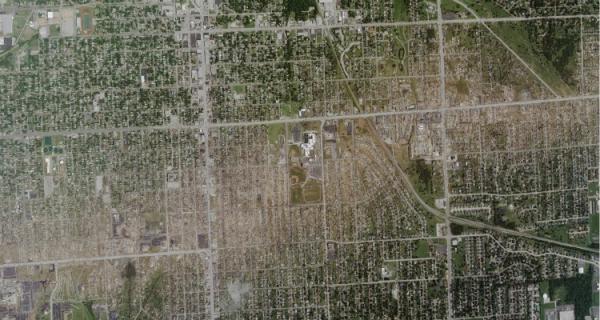
Joplin Tornado Had Hurricanelike, 300-Yard Eye

The deadly Joplin, Mo., tornado was so big that it had an eye that spanned three football fields, according to the National Weather Service (NWS) in Springfield, Mo.
The eye of the storm is a circular area in the center, where light winds and clear skies are surrounded by towering storm clouds.Damage surveys estimate the Joplin twister's eye was about 300 yards (900 feet) wide.
Several Joplin residents were actually aware they were inside the eye, as the deadly twister barreled through on May 22, reported the Joplin Globe. Resident Kaylee Parker found shelter in a liquor store, as the EF-5 twister the highest ranking on the tornado damage scale roared overhead. [Related: The Tornado Damage Scale in Images ]
"After the first hit, it slowed way down. Some of the people were trying to get up and run off. We yelled at them: 'It's not over yet.' That's when the back end comes through and hits even harder," Parker told the Joplin Globe.
Tornadoes with eyes are rare but not unheard of. Scientists have known about tornadoes' eyes for about 15 years.The EF-5 tornado that hit Greensburg, Kan., in 2007 was reported to have an eye.
Tornadoes need to be big and slow for people to realize when they are in the eye. The Joplin twister was both, at three-quarters of a mile (1.2 kilometers) wide and had winds in excess of 200 mph (320 kph). It traveled at a speed of 35 mph (56 kph), on average across its 22 mile (35 km) path.
The tornado killed more than 150 people, making it the deadliest single twister to strike the United States since 1947, when a storm struck Woodward, Okla., killing 181 people, according to the National Oceanic and Atmospheric Administration (NOAA), which oversees the NWS. The 2011 tornado season ranks as one of the deadliest in U.S. history, with more than 500 tornado-related fatalities.
Get the world’s most fascinating discoveries delivered straight to your inbox.
As a tornado passes, the winds of the leading edge hit hard. Then a calm follows where no wind is apparent, followed by roaring winds again as the back of the twister passes.
Eyes are more common in the much bigger tropical cyclones (the generic term for tropical storms and hurricanes). The eye of a tropical cyclone can be up to 40 miles (65 kilometers) in diameter, with a similar eerie calm in the center. The wall of storms around the eye are where the most destructive parts of the cyclone are found.



